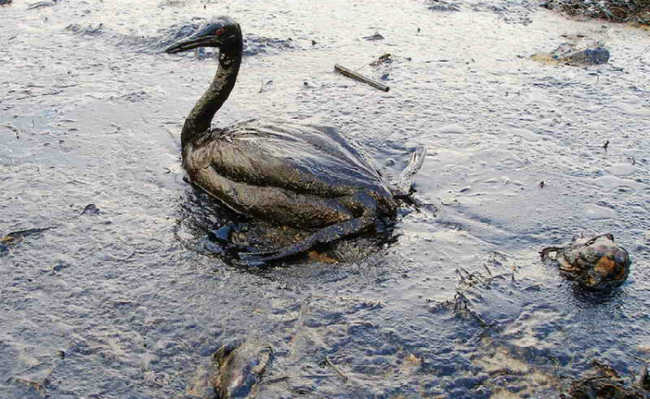New nanoparticles absorb oil from the ocean depths
Researchers develop technology to help combat the damage caused by an oil spill

"Oiled Bird - Black Sea Oil Spill 12/11/0" (CC BY 2.0) by marinephotobank
Nanoparticles that absorb oil like sponges were designed by scientists at the University of Texas A&M, in the United States (USA). Nano-sponges are used to remove spilled oil that has sunk into the sea. The research was published in the academic journal ACS Nano.
To clean up the surface of oceans when oil accidents happen, certain traditional removal methods already exist, but they do not work to purify the contaminated ocean floor.
To get rid of the pollution that was lodged in the depths, dispersing chemicals were used. But these compounds didn't remove impurities from the ocean, they just made oil spilled into the hydrosphere less harmful to the environment.
about small sponges
The nanoparticles used to clean the ocean are 100 times thinner than a human hair and capture ten times their own weight of oil pollution in the sea. After completing the service, the dwarf sponges can be removed from the water, using a magnet to attract the iron present in the oxide, and have the oil removed through an ethanol wash. After these processes, the nanoparticles can be reused for other activities.
The architecture of the nano-cleaners is based on iron oxide nanoparticles coated with a polymer that uses Styrofoam and the absorbent used in baby diapers. When used to clean up the ocean, a little water is assimilated, but the main thing is the large amount of oil absorbed. When full, the nanoparticle changes color from light brown to black and floats to the surface.
Testing and complementing method
The amount of nano-sponges needed to clean the entire volume dumped by an oil spill would be astronomical. Therefore, the use of traditional oil cleaning techniques at sea would be used first. Afterwards, the nanoparticles would deal with the surplus at the bottom of the sea. It is a technology that creates an additional option to combat hydrosphere pollution. In addition, researchers are still evaluating how the technology behaves after being released into the ocean, measuring the influence that waves have on oil absorption, for example.
One concern that exists is that these nanoparticles are not biodegradable, so it is necessary to check the amount of material that can be released into the sea. Researchers are working on developing a sugar-based polymer that could be absorbed into the environment.










